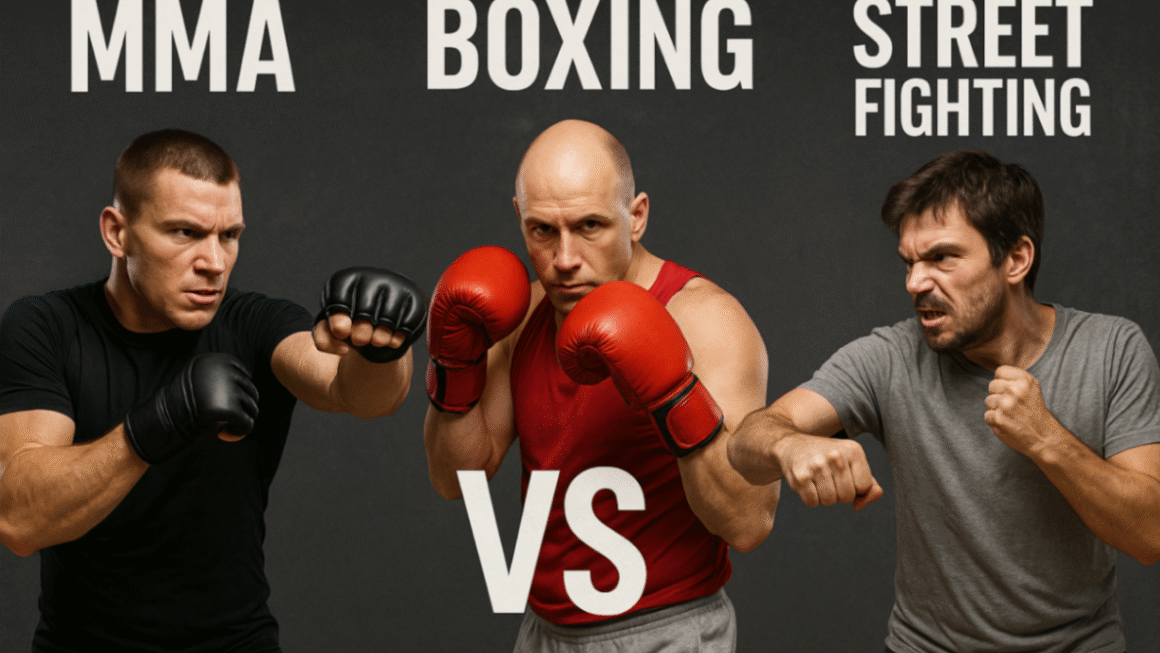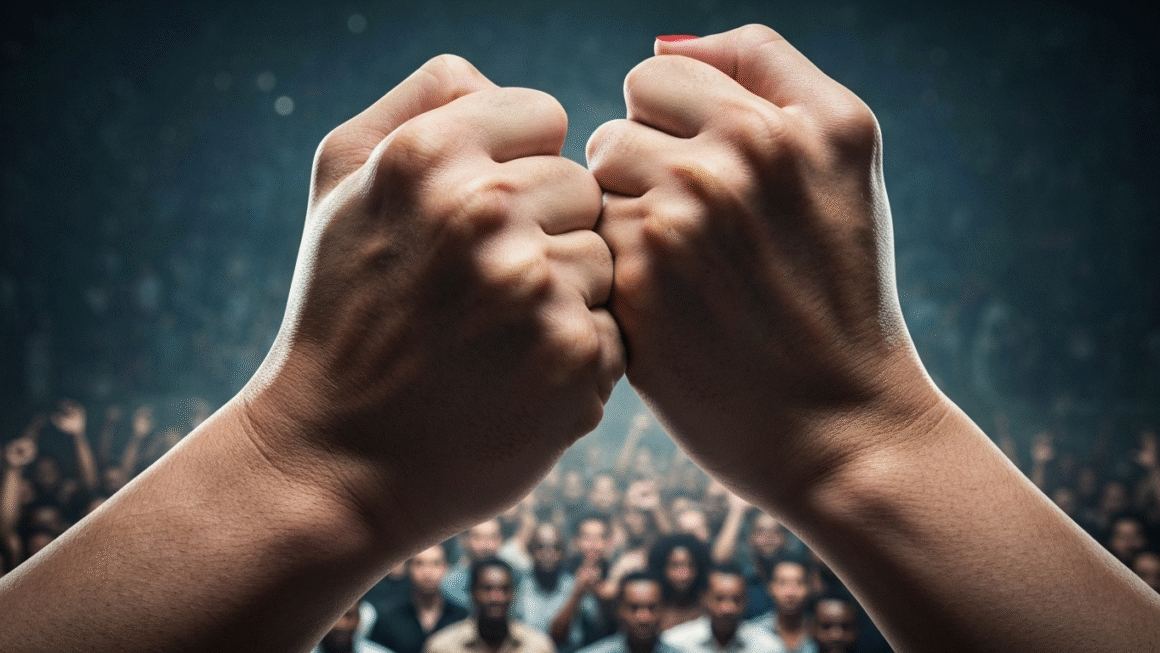Key Highlights
Here is a quick overview of why some men choose physical confrontation over peaceful resolution. This article will give you a better idea of the complex factors at play.
A street fight is commonly defined as a spontaneous physical confrontation that occurs in public settings between individuals, often outside the boundaries of organized sports or martial arts. Street fights often erupt over minor issues, revealing deep-seated emotional triggers.
- Street fights often erupt over minor issues, revealing deep-seated emotional triggers.
- Media and social media portrayals of violence can normalize physical aggression as a response to conflict. Unlike martial arts, a street fight is chaotic and lacks rules, making it highly unpredictable. The biggest differences between street fighting and martial arts include the absence of structure and guidelines in a street fight, compared to the disciplined techniques, training, and respect for safety found in martial arts.
- Unlike martial arts, street fighting is chaotic and lacks rules, making it highly unpredictable.
- Psychological drivers like ego and outdated concepts of masculinity push men to prove their strength physically. Understanding these weak points provides a realistic sense of why de-escalation is often overlooked in real life.
Street fighting differs significantly from professional combat because it lacks rules, regulations, and referees. Unlike professional or organized real-life combat such as martial arts competitions, street fights often involve unpredictable situations, improvised tactics, and unexpected attacks. This makes de-escalation and awareness of weak points even more critical for personal safety.
- Understanding these weak points provides a realistic sense of why de-escalation is often overlooked in real life.
- The historical context of male aggression shows that physical dominance has long been a societal expectation.
Introduction
Why do some men resort to a street fight instead of talking things out? With a reported increase in street violence in the United States, this question is more relevant than ever. This expert review will explore this specific topic, looking at the cultural, social, and psychological reasons that drive men toward physical altercations. We will analyze the historical context and modern influences that shape these decisions, providing a clear understanding of this complex and dangerous form of conflict resolution.
Understanding Street Fighting Among Males

To comprehend why street fights occur, you first need to understand what they are and what they are not. A street fight is not a disciplined contest of skill; it is a raw, often desperate, explosion of aggression. Getting a realistic sense of this reality is the first step toward understanding the choices that lead to it.
This section will cover the definition of a street fight and how it differs from organized combat sports. Examining this specific topic helps explain the mindset of individuals involved and how real-life violence differs from what is often seen in media, which can influence reader reactions.
Defining Street Fighting and Its Social Connotations
A street fight is typically an unplanned, public physical confrontation. Unlike a sanctioned match, it erupts suddenly, often from a trivial disagreement like a spilled drink or an aggressive look. There is no clean writing surface here; the environment itself can become part of the conflict. For those interested in seeing real-life depictions, famous documentaries and movies about street fighting include ‘Dogfight: A Boxing Documentary,’ ‘Fight Club,’ and ‘Knuckle,’ which explore both the raw reality and the social connotations of street fighting in Newark.
The social connotations are overwhelmingly negative. These altercations are seen as primitive and dangerous. The presence of social media has amplified this, as videos of street fights can go viral, permanently branding individuals as violent or out of control. This public display often bypasses any attempt at de-escalation, as the participants are performing for an audience, whether in-person or online. A common misconception about street fighting is that it involves skillful or honorable combat, when in reality, these situations are unpredictable, often fueled by aggression, and rarely governed by any rules or ethics. Many also assume that anyone involved in a street fight is inherently violent, overlooking the complex social factors and circumstances that may contribute to such altercations.
Ultimately, a street fight is a failure of communication and emotional control. It highlights the weak points in an individual’s ability to manage conflict constructively, resorting instead to a chaotic brawl where serious injury is a highly probable outcome. Despite the negative social connotations, street fighting is a topic covered in various online communities and social media accounts. These platforms often share discussions, videos, and advice related to street fighting, though perspectives and motivations behind such content widely vary.
How Street Fighting Differs from Sport and Martial Arts
It is crucial to get a better idea of the vast differences between a street brawl and disciplined combat like martial arts. Martial arts are built on a foundation of respect, control, and strategy. Practitioners spend years honing their skills within a structured rubric designed for self-improvement and defense, not just aggression.
In contrast, a street fight is pure chaos. There are no rules, referees, or weight classes. “Fancy moves don’t finish fights,” as one analysis of over 1,000 fights concluded. The goal is not to score points but to incapacitate the other person as quickly as possible, often leading to severe and unpredictable injuries. In street fights, typical rules found in sports or martial arts—such as prohibitions against certain strikes, requirements to break when told, or respect for an opponent’s safety—are completely absent. Participants use any means necessary, and there is generally no expectation of fairness or protection.
The following table breaks down the key distinctions: Feature Street Fighting Martial Arts / Sport Fighting Rules None; unpredictable and chaotic Strict rules, regulations, and scoring systems Environment Uncontrolled public spaces; potential for weapons Most people perceive a street fight as much more dangerous, unpredictable, and uncontrolled compared to sport fighting or martial arts. While sport fighting takes place in regulated environments with well-defined rules and protects participants with safety measures, a street fight is often viewed as chaotic, risky, and potentially involving weapons, making it a very different experience in the public’s estimation.
|
Feature |
Street Fighting |
Martial Arts / Sport Fighting |
|---|---|---|
|
Rules |
None; unpredictable and chaotic |
Strict rules, regulations, and scoring systems |
|
Environment |
Uncontrolled public spaces; potential for weapons |
Controlled setting (ring, mat); no external weapons Objective In street fighting, the aim is often incapacitation or survival, contrasting with sport and martial arts where the focus is on scoring points or achieving a technical victory and maintaining sportsmanship. Mindset Participants in street fights are often driven by ego, anger, or fear, while martial artists are focused, disciplined, and strategic. Techniques Street fights typically involve raw, unskilled striking and grappling. Historically, there have been several well-known street fights, such as the 1976 altercation between Muhammad Ali and a group of fans in New York, and various infamous brawls in urban centers throughout the 20th century. These events have often highlighted the unpredictable and dangerous nature of ta outside controlled sporting environments. |
|
Objective |
Incapacitation; survival |
Scoring points or technical victory; sportsmanship |
|
Mindset |
Often driven by ego, anger, or fear |
Focused, disciplined, and strategic |
|
Techniques |
Raw, unskilled striking and grappling |
Refined, practiced techniques for specific situations |
Cultural and Societal Influences on Male Conflict Resolution

Culture and society play a significant role in shaping how men respond to conflict. From movies to peer pressure, external forces often suggest that physical violence is a valid, or even preferred, method of settling disputes. This historical context normalizes aggression, making it a learned behavior for many. However, before getting involved in street fighting, it is important to understand that such situations can have serious physical, legal, and psychological consequences. Street fighting is unpredictable, and what may seem like a simple altercation can escalate quickly, leading to injuries, criminal charges, or lasting emotional impact.
This section will explore how media and peer groups influence these attitudes. By using a panel of smart tools for analysis, we can better understand the course context of how these ideas are spread through pop culture, content generation, and social media, ultimately impacting real-world actions.
The Role of Media and Pop Culture in Shaping Attitudes
Media and pop culture frequently glorify violence. Movies, television shows, and video games often portray fighting as a heroic and effective way to solve problems. This constant exposure can desensitize you to the real consequences of violence and create a skewed perception of what a fight entails.
Social media platforms have become a primary channel for this content. Viral videos of street brawls are shared widely, often without context or discussion of the severe injuries that can result. This digital arena can encourage performative aggression, where individuals feel pressured to live up to a tough online persona. A citation finder would quickly reveal countless studies on media’s impact on aggression.
Here’s how media shapes these attitudes:
- Glamorization of Violence: Fights are often depicted as “cool” or necessary for justice.
- Unrealistic Expectations: Action heroes rarely suffer realistic injuries, making violence seem consequence-free.
- Normalization: Constant exposure makes physical conflict seem like a common and acceptable response.
- Performative Masculinity: Characters are rewarded for aggression, linking it to respect and power.
Historical and Peer-Driven Perspectives on Physical Confrontation
Throughout history, physical prowess has been linked to masculinity and social status. This historical context creates an unspoken expectation for men to be capable of physical dominance. For generations, being able to “handle yourself” in a fight was a rite of passage, a way to earn respect among peers.
This pressure is reinforced by peer groups. A classmate or friend might taunt someone for backing down from a challenge, framing non-violence as weakness. In some social circles, experience in fights is seen as a badge of honor, making a person seem more worldly or tough. This environment can make a young man feel like he has no choice but to fight to maintain his standing.
This peer-driven dynamic is powerful. When your social survival feels tied to your willingness to be violent, the decision to fight can feel less like a choice and more like a necessity. It is a cycle where past fights are used as a recruiter for future ones.
Psychological Factors Driving Men Toward Street Fights
Beyond cultural influences, powerful psychological forces are at play. An individual’s ego, sense of masculinity, and emotional triggers can create a combustible mix that leads directly to physical violence. For many, the fight is not about the issue at hand but about an internal battle for self-worth and dominance.
This section offers an expert review of these internal drivers. We will examine how ego and emotional control—or the lack thereof—can push a man past the finish line to produce a final draft, from a verbal argument to a physical brawl.
Masculinity, Ego, and the Need to Demonstrate Strength
Traditional notions of masculinity often equate strength with physical power. This creates immense pressure on men to appear strong and dominant at all times. When challenged, this perceived threat to one’s masculinity can trigger an aggressive response, as fighting becomes a way to reaffirm one’s status.
The ego is central to this dynamic. An analysis of over 1,000 street fights revealed that “ego usually loses.” A person driven by ego is not thinking strategically; they are reacting emotionally to a perceived slight. Their goal is not safety or resolution but winning at any cost to protect their pride. This mindset makes them predictable and reckless.
An expert review would show that this need to demonstrate strength is often rooted in insecurity. A truly confident individual does not need to prove their strength through violence. Instead, they can navigate conflicts with composure, using a panel of smart tools, much like a librarian for de-escalation rather than their fists.
Emotional Triggers Leading to Physical Altercations
In real life, fights rarely start over significant issues. Instead, they are ignited by emotional triggers—small events that provoke a disproportionately aggressive reaction. These triggers bypass rational thought and tap directly into raw emotion. The best part of understanding these triggers is learning to recognize and control them in yourself and others.
A feeling of being disrespected is one of the most common triggers. This could be anything from a public insult to being cut off in traffic. For someone with poor emotional regulation, this perceived slight feels like a direct attack on their identity, demanding an immediate and physical response. The situation quickly escalates because emotions, not logic, are in control.
Common triggers include:
- Public Humiliation: Being embarrassed in front of others.
- Perceived Disrespect: A challenging look, an insult, or a dismissive gesture.
- Invasion of Personal Space: Someone getting too close in a confrontational manner.
Conclusion
In conclusion, the choice of street fighting as a means of conflict resolution among males is influenced by a complex interplay of cultural, societal, and psychological factors. From the portrayal of aggression in media to deeply ingrained notions of masculinity, these elements contribute to the perception that physical confrontations can signify strength and resolve. Understanding these motivations is vital not only for addressing conflicts but also for fostering healthier communication and conflict-resolution strategies. By recognizing the underlying triggers and societal norms, we can begin to challenge the narrative around street fighting and encourage alternative methods of resolution. If you’re looking for insights on how to navigate conflict more effectively, feel free to reach out for further discussion.
Frequently Asked Questions
Are there any rules or etiquette observed in street fights?
No, there are no rules or etiquette in a street fight. Unlike martial arts, these are chaotic, unpredictable events where anything can happen. In real life, the primary goal becomes survival, not sportsmanship, which makes them incredibly dangerous.
How is street fighting perceived compared to sport fighting in the U.S.?
In the U.S., sport fighting is generally seen as a legitimate athletic competition governed by a strict rubric of rules and skill. In contrast, a street fight is viewed as a criminal, reckless, and primitive act, often leading to negative reader reactions and legal consequences.
What are some misconceptions people have about street fighting?
A common misconception, often fueled by social media, is that martial arts techniques easily win a street fight. In reality, simple, direct aggression often overcomes complex moves. Another is that size is the deciding factor, but surprise and a willingness to be reckless can be more decisive.




